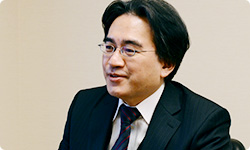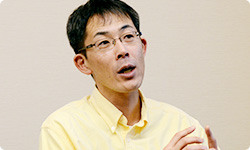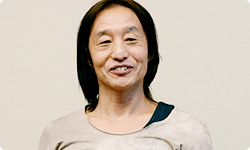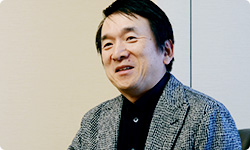So, how did you manage to keep the difficulty level balanced?

First of all, we created something according to our own ideas, then watched staff members playing it, observing the atmosphere as they played and asking their opinions. If there was a part they thought was difficult, we’d cut something or add something. This process was repeated over and over for many days.
I see. There’s no magic formula, is there? You just have to observe the reactions of players around you, read the play reports and make adjustments accordingly.
Exactly. That’s why we started out by establishing a development environment in which we could make adjustments in real time.
The structure of roguelike games basically involves playing around with random numbers. But when you think about how people become so frantic over them, you realise how much fun such games really are.
I think so, yes.
These games have a number of hooks that elicit a feeling of “I want to achieve something! I want to overcome something!” in players. Apart from this deliberate sense of challenge, though, you must have tried your best to prevent players from feeling stressed with the game?
The very fact that it’s a game which relies on random numbers means there’s a very fine line between hope and betrayal. This delicate balance is one of the key features of the genre.
When I first played Rogue, I felt like I had to change my way of thinking. At first, I kept failing and having to start again. “What is this game?!” I thought. Even as I thought that, however, I said to the game, “If that’s how it’s going to be, I’m ready for you!”. Once I started thinking like that, I became much better at the game, curiously.
You actually spoke to the game, did you?
Yes. I think that people who love Rogue and Mystery Dungeon have all reached that stage, to be honest.
As a step towards introducing people to the enjoyment that roguelike games provide, the pitching of this game is very important. Personally, I feel that it’s your respect for this enjoyment that was responsible for the creation of this series, Ishihara-san.
I really thought it would be great if we could allow just one more person to sample the joys of dungeon-based RPGs. I also really wanted to include some dungeons that are challenging enough for players of Rogue and Torneko to deem worthwhile. I hope players are looking forward to that.
All right, let’s conclude by recommending this latest title, both to those who’ve played Pokémon Mystery Dungeon before and to new players. Let’s start with you, Nagahata-san.
All right. I’d tell experienced players that we’ve added all sorts of new features, ones that would only be possible on Nintendo 3DS, and I’d invite them to sample this evolved version of Pokémon Mystery Dungeon. For new players, I’d just tell them to relax as much as they can and enjoy the game! (laughs)

Of course, you’ve made this game so that it’s accessible for first time players as well, so even those who’ve never played a Mystery Dungeon title before won’t have any trouble with it, will they? These are games that reveal their enjoyable depths as players get used to them, so this title acts as a gateway that lures new players in.
That’s right. We’ve tried to make the game as varied as possible. As a result, I think that if even beginners were to spend a little time with the game, they’d find themselves able to play it almost without noticing. I think it’s a smooth process.
And it really is a game you can play a thousand times, to boot! What do you think, Tomie-san?
Well, from a story point of view, experienced players may notice that we’ve taken a slightly different approach this time around. Having said that, the feeling of taking part in the Pokémon legend is no different to how it has been in the series up to now. I really hope everyone enjoys this title.

Players will be able to appreciate the charm of Pokémon in a slightly different way to regular Pokémon titles, won’t they?
Yes, that’s right. If novice players get stuck at any point in the game, there is all sorts of assistance available to them, so I hope they don’t become discouraged and continue playing to the end of the game. Also, the music in this title is great, just like in the previous games. My wish is that players enjoy listening to the music and make it to the ending!
Thank you very much. Ishihara-san, what do you think?
The game’s introduction is the same as for previous titles in the series, so experienced players might think “I have to become a Pokémon and save the world… AGAIN?” (laughs) However, the expressive power of Nintendo 3DS, the appeal of the animations and the dramatic nature of the story should allow them to enjoy a deeper experience than any they’ve had before.What’s more, Tomie-san’s plotlines for the Pokémon allow players to discover unexpected new aspects to them, so I want players to read the story as well. For example, the box art for this game depicts a Pokémon called Dunsparce. Why does a Pokémon that seems so plain at first glance play such an important role at the start of the game…? These are the kind of questions that players might ask! (laughs)

Well, Tomie-san? Why did you decide to feature this Pokémon so prominently? (laughs)
Well… there were lots of other candidates, but I just thought Dunsparce was really cute! (laughs)
(laughs) New players will notice that the Pokémon they imagine from cartoons and other games live according to a different philosophy in this game world. This should also help keep things feeling fresh. I would like players to enjoy themselves while sampling this worldview!
I see. Well, thank you very much. I personally feel that the Mystery Dungeon series is a representative example of a modern hardcore game, and that the Pokémon Mystery Dungeon games are a continued attempt at introducing players to the joys of such games. If you focus only upon intensifying the appealing points of hardcore games, they tend to become increasingly exclusive in their reach and therefore less accessible to many potential players. Every time a Pokémon Mystery Dungeon game is released, however, new players are introduced to these games and I think this is really important for the future of video games. Pokémon fans are also sure to enjoy this title too. They’ll no doubt find Tomie-san’s distinctive Pokémon images really fresh, especially when combined with the new features that Nintendo 3DS allows. Thank you very much for your time today, everyone.

Thank you very much.
© 2024 Nintendo.